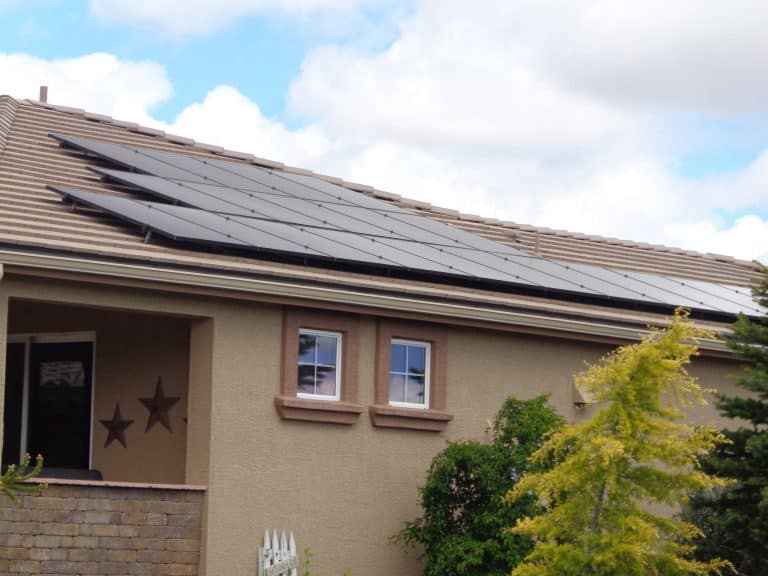Monofacial Vs. Bifacial Monocrystalline Modules

Solar panels determine how much energy a solar array absorbs. A solar panel rated for 200-watts can’t produce more than 200 watts of electricity per hour.
As time has progressed, solar panels have become more robust. The average electrical output of solar panels ranges between 250 and 400 watts. These solar panels have an average efficiency between 15 and 20 percent, while premium solar modules have energy efficiencies of 23 percent.
Bifacial solar technology, however, boasts better solar panel ratings. So, do we invest in these new technologies now, or wait until they have gone through more testing? Let’s take a look at mono-facial mono-crystalline and Bifacial Mono-crystalline modules to find out.
Bifacial Solar Panels
Bifacial solar panels, as the name suggests, have two sides of solar cells. These two sides of cells have the potential to produce more electricity in less space, meaning the efficiency of these solar panels could outperform other photovoltaic technology.
Since these solar panels need less space, homes with limited space can install larger systems. A more robust solar array would increase the solar offset, which would decrease the electricity bill. However, if astronomical prices result from this new tech, only those who can’t live without or have money to spare will purchase it.
How Bifacial Solar Modules Work
To gain a better understanding of whether bifacial modules make sense for residential solar, let’s look at how bifacial solar modules work. Bifacial solar panels have solar cells on both sides of the solar panel. These cells typically use monocrystalline technology.
Glass covers the top and the back of the module with an anti-reflective coating. Metal framing often isn’t used on bifacial solar panels. Instead, the glass sides adhere to each other and clamp into a unique racking system.
The cells on the top of the solar panel gather direct sunlight while the cells on the bottom collect reflected light. For these solar panels to work at their best, they need a reflective surface under them. For residential customers, this means they need either lighter colored roofs, a ground mount, solar tracking racking or a solar panel awning.
The Efficiency of Bifacial Solar Panels
While bifacial solar panels have higher efficiency ratings, they aren’t that much more efficient. With a tracking system, these modules can reach up to 27 percent efficiency. Meaning these modules only have a difference of four percent more than an average premium mono-facial mono-crystalline module.
Monofacial Monocrystalline Solar Panels
As one of the oldest photovoltaic technologies, monocrystalline cell technology has gone through the most real-life testing. Through the years advances to this time-tested technology have improved its efficiency significantly.
Unlike bifacial solar panels, mono-facial solar only has one side of solar cells collecting light. However, they also don’t require reflective surfaces and special mounting equipment.
Why Monofacial Solar Panels are Better than Bifacial Modules
Although bifacial modules have higher efficiency ratings, they need special equipment and additional requirements. Homes already need to meet a set of specific panel placement, energy usage and financial conditions to install solar. Bifacial, however, adds to these contingencies.
If a homeowner wants a roof install, they need to replace or already have a reflective roof, or they need to add a solar panel awning to the home. On top of these special conditions, these solar panels require unique mounting, which means mounting equipment costs more to produce.
While ground mounts create the perfect condition for bifacial modules, they also have added costs. Those considering a ground mount have to add a reflective ground cover, such as sand, for a bifacial system. If the customer wants the most out of their bifacial modules, they need a solar tracking system, which can further increase the price.
These additions detract from the savings of the solar module’s high-efficiency ratings. Unless the homeowner can’t reach their desired solar offset through mono-facial solar modules, it doesn’t make sense for homeowners to invest in bi-facial solar panels.



Send a Message
Oops! We could not locate your form.